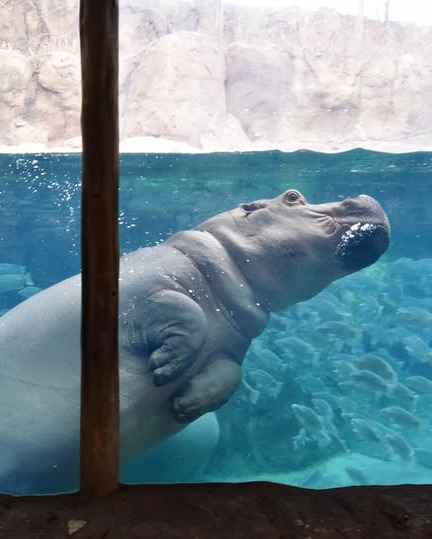- Cincinnati Zoo’s water conservation strategies have resulted in over 2 billion gallons of water saved in two decades.
- Innovative measures adopted by the Zoo include fixing leaks, water usage monitoring, and stormwater retention systems.
- Hydroponic farming techniques are employed to grow food for animals, optimizing water usage.
- Fiona the hippo enjoys a sustainable habitat, swimming in recycled rainwater, exemplifying effective resource management.
- Cincinnati Zoo continues to pioneer efforts in water conservation, collaborating with partners to further reduce water usage.
Cincinnati Zoo has set an exemplary benchmark in water conservation, achieving remarkable success in saving over 2 billion gallons of water over the last two decades. This achievement underscores the feasibility of combined technical advancements and operational modifications in achieving sustainable zoological management. The Zoo’s strategic focus on water management reflects its commitment to environmental stewardship and is instrumental in maintaining its standing as The Greenest Zoo in America®.
One of the key pillars of this success is the Zoo’s initiative to address water wastage by fixing leaks. Leaks, often overlooked, contribute significantly to wasted water in many facilities. By systematically identifying and repairing leaks within the zoo infrastructure, Cincinnati Zoo has managed to significantly reduce unnecessary water consumption. This proactive measure alone serves as a critical reminder of the substantial effects that incremental improvements can have when scaled over complex systems.
Furthermore, the Cincinnati Zoo has equipped itself with efficient water monitoring systems, continuously tracking water usage and identifying opportunities for further savings. These systems provide real-time data that empowers staff to make informed decisions. By leveraging such technology, the Zoo ensures optimal water allocation, mitigating the risk of overuse and fostering a conscious consumption culture.
In addition to these measures, the Zoo has installed stormwater retention tanks throughout its grounds. Designed to capture and store rainwater, these tanks alleviate the pressure on urban water supplies and provide a vital resource that sustains various operations within the Zoo. The collected rainwater is strategically utilized, ultimately enhancing the Zoo’s biodiversity through the provision of clean, recycled water for habitats.
The Zoo’s commitment to water conservation extends to its innovative approach to animal nutrition via hydroponic farming. Hydroponics, the method of growing plants in a soil-less medium using nutrient-rich solutions, offers a highly efficient system of food production. This technique suits the Zoo’s sustainability goals, as it drastically reduces water usage compared to traditional farming methods. By producing food on-site, the Zoo minimizes its environmental footprint, securing a sustainable food supply chain for its diverse animal population.
One of the most striking examples of Cincinnati Zoo’s dedication to its water management practices is its treatment and reuse of rainwater to fill Fiona the hippo’s enclosure. Fiona, a beloved resident and internet sensation, swims in water that undergoes rigorous filtration and recirculation. This effort exemplifies how advanced recycling technologies can provide wildlife with the highest standard of care while minimizing environmental impact.
Beyond these efforts, Cincinnati Zoo has built partnerships to further its sustainability mission, collaborating with entities such as @rotorootercincy. Together, they explore innovative methodologies and technologies to elevate water conservation standards. These collaborative efforts epitomize the progressive mindset that propels the Zoo’s initiatives and enhances community involvement in conservation practices.
The Cincinnati Zoo’s comprehensive water conservation measures illuminate the indispensable role of zoos as guardians of crucial natural resources. Through conscious water management, innovative agricultural practices, and strategic partnerships, the Zoo exemplifies how institutions can lead in ecological conservation. Looking ahead, Cincinnati Zoo’s pioneering strategies will continue to inspire global efforts dedicated to preserving precious water resources for future generations.
*****
Source Description
Today is World Water Day! Cincinnati Zoo has saved more than 2 billion gallons of water in the last twenty years by fixing leaks, monitoring water use, installing stormwater retention tanks around the Zoo, and growing food for the animals using hydroponic farming.
Even world-famous Fiona swims in 100% recycled rainwater! The Greenest Zoo in America® and @rotorootercincy continue to seek new ways to use less of this natural resource.


